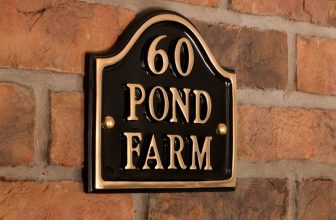Exploring the Benefits of Vegetable Trugs for Urban Gardening
Vegetable trugs, also known as garden trugs or planters, have become a popular choice for urban gardeners seeking to grow their own vegetables in limited spaces. These versatile and portable containers offer a convenient solution for cultivating a variety of vegetables, herbs, and flowers on balconies, patios, or even indoors. With their compact design and efficient use of space, vegetable trugs enable city dwellers to enjoy the rewards of homegrown produce without the need for a traditional garden plot.





Types of Vegetable Trugs
Vegetable trugs come in various styles and materials to suit different preferences and gardening needs:
- Wooden Trugs: Traditional wooden trugs offer a rustic and charming aesthetic, with slatted sides and sturdy handles for easy transport.
- Plastic Trugs: Lightweight and durable, plastic trugs are weather-resistant and often feature drainage holes to prevent waterlogging.
- Wicker Trugs: Woven from natural materials such as willow or rattan, wicker trugs add a touch of elegance to any garden setting.
- Stackable Trugs: Stackable trugs are designed to save space by stacking vertically, making them ideal for small balconies or limited outdoor areas.
Key Considerations Before Buying
Before investing in a vegetable trug, consider the following factors to ensure you choose the right option for your gardening needs:



![VegTrug Medium Greenhouse Frame & Multi Cover Set, White [Planter Not Included]](https://m.media-amazon.com/images/I/514M7ywUK7L._SS520_.jpg)








- Size: Determine the size of trug that will accommodate the vegetables you wish to grow and fit within your available space.
- Material: Choose a trug material based on durability, aesthetics, and weather-resistance, considering factors such as exposure to sunlight and rainfall.
- Drainage: Ensure the trug has adequate drainage holes to prevent waterlogging and root rot, especially if you’ll be growing vegetables that require well-drained soil.
- Mobility: Consider whether you’ll need to move the trug frequently and choose a design with sturdy handles or wheels for easy transport.
Buying Guide
When shopping for vegetable trugs online, keep the following tips in mind to ensure you make an informed decision:
- Read Reviews: Look for customer reviews and ratings to gauge the quality, durability, and performance of the trug, as well as the retailer’s customer service.
- Check Dimensions: Verify the dimensions of the trug to ensure it fits your available space and can accommodate the vegetables you wish to grow.
- Compare Prices: Compare prices across different retailers to find the best value for your budget, taking into account any additional shipping costs.
- Consider Accessories: Explore accessories such as liners, trellises, or covers that can enhance the functionality and versatility of your vegetable trug.
Pros and Cons of Vegetable Trugs
Vegetable trugs offer several benefits for urban gardening, but they also have some drawbacks to consider:
- Pros:
- Space-saving design for small balconies or patios
- Portable and lightweight for easy transport
- Allows for efficient use of soil and water
- Reduces the need for bending or kneeling, making gardening more accessible
- Can be used indoors or outdoors, depending on the season and climate
- Cons:
- May require frequent watering due to limited soil volume
- Some designs may be less durable or prone to weathering over time
- Limited space for root growth compared to traditional garden beds
- May not accommodate larger or deep-rooted vegetables
- Initial investment required for purchasing the trug and necessary accessories
Usage Tips
To make the most of your vegetable trug and ensure a successful harvest, consider the following tips:
- Choose the Right Vegetables: Select vegetables that are well-suited to container gardening and consider factors such as sunlight, temperature, and space requirements.
- Provide Adequate Watering: Monitor soil moisture regularly and water as needed to keep the soil consistently moist but not waterlogged.
- Fertilise Regularly: Use a balanced fertiliser or compost to replenish nutrients in the soil and promote healthy growth and productivity.
- Rotate Crops: To prevent nutrient depletion and pest infestations, rotate crops seasonally or annually and avoid planting the same vegetables in the same trug year after year.
Shopping Online: Reviews, Prices, and Discounts
When shopping for vegetable trugs online in the UK, explore reputable retailers such as Amazon, B&Q, or Garden Trading for a wide selection of options to suit various budgets and preferences. Before making a purchase, read customer reviews and compare prices to ensure you’re getting the best value for your money. Additionally, keep an eye out for seasonal sales or promotions to take advantage of discounts and savings on your gardening essentials.
Conclusion
Vegetable trugs offer an accessible and efficient way for urban dwellers to grow their own produce, regardless of space limitations or gardening experience. With their versatile design, portability, and ease of use, trugs enable anyone to enjoy the satisfaction of harvesting fresh vegetables right at home. By selecting the right trug, following proper maintenance and usage tips, and choosing suitable vegetables for container gardening, you can create a thriving urban garden that adds beauty, flavour, and sustainability to your living space.






